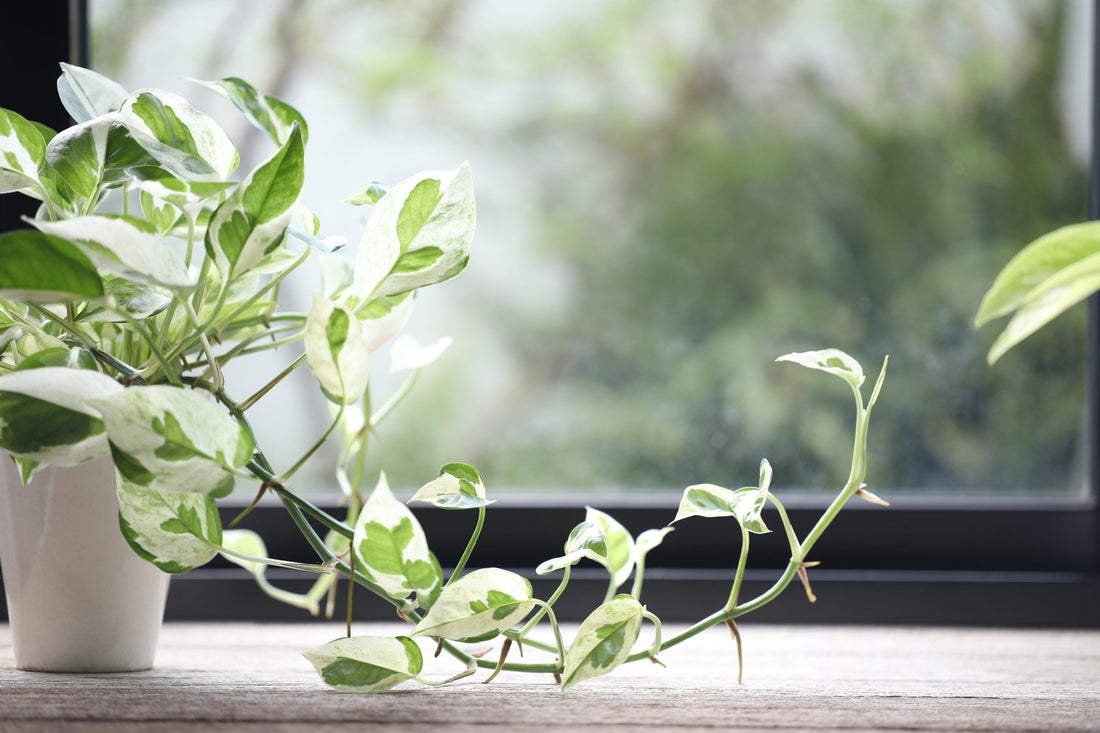Overwintering 411
As fall's crisp chill creeps in, your tropical houseplants and favourite outdoor annuals might be ready for a cozy indoor retreat. In Georgina, overwintering your plants isn’t just a luxury—it’s a smart move to keep them alive and thriving for next spring. Let's dive into why, when, and how to move your leafy friends indoors without a meltdown (yours or the plants’).
Why Overwinter?
The cold, harsh winters in Keswick spell doom for tropical houseplants and tender annuals if left outside. Overwintering—bringing plants indoors during colder months—gives them a fighting chance to survive until they can return outdoors next year. It saves you from buying new plants come spring and allows you to enjoy their beauty inside during winter’s dark days. Plus, it helps preserve rare or cherished plants that might not be readily available at your local garden centre.

When to Bring Plants Indoors
Timing is everything. Wait too long, and your plants might be giving you the cold shoulder—literally! Once nighttime temperatures consistently dip below 10°C (50°F), it’s time to bring them in. For some cold-sensitive plants, you may even want to start the move when temperatures hover around 15°C (59°F). Aim to get this task done before the first frost.
Annuals That Can Overwinter Indoors
Yes, some of those annuals you thought were one-season wonders can actually be overwintered indoors, keeping them alive until the spring sunshine returns. Here are some popular candidates:
- Geraniums – They thrive in a sunny indoor spot.
- Begonias – Perfect for bright indirect light.
- Coleus – Keep these colourful beauties in a bright room.
- Sweet Potato Vine – Can be a bit of a diva indoors, but it’s worth the effort.
- Fuchsia – Bring it inside to a cooler room with plenty of light.
- Herbs like basil, rosemary, and parsley – While technically annuals, they can act like perennials indoors.

How to Bring Them In
Before dragging your plants indoors, there are a few steps you’ll need to follow to make sure you don’t invite unwelcomed guests (hello, bugs) into your home.
- Inspect for Pests: Look for aphids, spider mites, or any other freeloaders. A magnifying glass helps!
- Hose Them Down: A strong spray of water can dislodge pests and wash away dirt.
- Quarantine: If possible, keep them separate from your indoor plants for a couple of weeks. This ensures any sneaky pests don’t spread.
Preparing Plants for Indoors
Your plants are used to the great outdoors, so moving them inside can be a bit of a shock. Here’s how to cushion the blow:
- Gradually Acclimate: Start by bringing plants in at night, then outside during the day for a few days. This helps them adjust to the lower light and temperature indoors.
- Repot if Necessary: If roots are cramped or you spot pests in the soil, consider repotting them with fresh, sterile potting mix.
- Trim and Prune: Trim any leggy growth or unhealthy-looking leaves to encourage bushier, healthier plants indoors.

What to Treat Them With
Give your plants a little spa treatment before their indoor staycation.
- Insecticidal Soap: A gentle insecticidal soap can help get rid of pests without harming your plants. Spray your plants thoroughly before bringing them indoors.
- Neem Oil: For a more natural option, neem oil can be effective against a range of pests like spider mites and aphids.
- Fungicide: If you notice any signs of mildew or mould, use a fungicide to prevent problems from escalating indoors.
How to Care for Them Indoors
Your plants are now pampered and pest-free, but the work isn’t over yet! Here’s how to make sure they thrive during their winter hibernation:
- Light: Most plants need a lot of light to survive indoors. South-facing windows are ideal. If you don’t have enough natural light, consider investing in a grow light.
- Humidity: Indoor air can be dry during winter, so place a humidity tray near your plants or mist them occasionally to keep them happy.
- Watering: Plants usually require less water indoors. Make sure the soil dries out between watering, and avoid overwatering (your plants’ roots hate sitting in soggy soil).
- Temperature: Keep your plants away from drafty windows or heating vents. Most tropical plants prefer temperatures between 18-24°C (65-75°F).
- Fertilizer: Cut back on fertilizing during the winter, as many plants go into a semi-dormant state and won’t need as many nutrients.

Bonus Tip: Keep an Eye on Stress
Plants may show signs of stress, like yellowing leaves or slow growth, as they adjust to their new indoor digs. Be patient—most will bounce back once they settle in.
So, there you have it, by following these steps, you’ll give your houseplants and outdoor annuals a comfy indoor winter home. Come spring, they’ll be ready to flourish once again outdoors—and you’ll have saved yourself a trip to the garden centre!
Happy gardening!
Shannon, the Garden Girl
Join Shannon, the Garden Girl, as she breaks down the basics of bringing your houseplants indoors for the winter. She'll walk you through the must-have products and give you the lowdown on what works and what doesn’t—so you can keep those beauties thriving while avoiding common mistakes!




